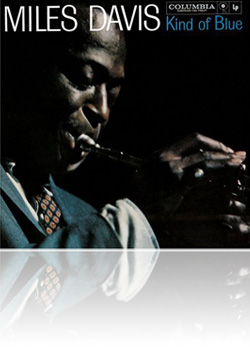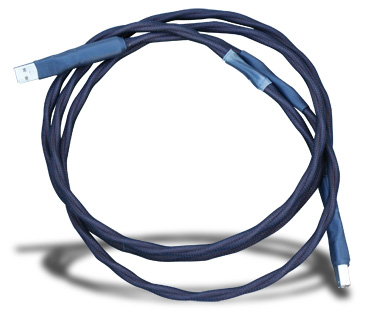September 1, 2009Kind of Remarkable
 August 17 was the 50th
anniversary of the release of Miles Davis’s Kind of Blue, an album that jazz
writer Fred Kaplan has justifiably described as "dreamily perfect." It’s
definitely my favorite jazz album, and gets regular play in my system. In fact, I
won’t make up my mind about any audio component until I’ve listened to Kind
of Blue through it from start to finish. For me, Kind of Blue is the
benchmark recording: If a component gets more out of it than I’ve heard before, I
know it’s something special. August 17 was the 50th
anniversary of the release of Miles Davis’s Kind of Blue, an album that jazz
writer Fred Kaplan has justifiably described as "dreamily perfect." It’s
definitely my favorite jazz album, and gets regular play in my system. In fact, I
won’t make up my mind about any audio component until I’ve listened to Kind
of Blue through it from start to finish. For me, Kind of Blue is the
benchmark recording: If a component gets more out of it than I’ve heard before, I
know it’s something special.
Coverage of the album’s anniversary saw the music
media paying a lot of attention to the epoch-changing music of Kind of Blue and the
unbelievable array of talented musicians who came together to create it. What I
didn’t see was any discussion of the record’s sound. Fifty years after it
was laid down on tape, Kind of Blue still sounds fresh and alive. There’s so
much detail, so many nuances in this recording, that, even after five decades of
continuous development of audio technology, I don’t think we’ve yet heard all
that Kind of Blue has to offer. But if audio hasn’t yet had its eureka moment
with Kind of Blue, some recent advances have brought us much closer to its very
essence.
What may be the best analog recording of all time sounds,
to me, far better from a digital source than from an LP. A big key to getting the most out
of Kind of Blue is a dead-quiet system, and for a given amount of money, a digital
source will most probably be quieter than its analog counterpart. In my experience, the
quietest, most accurate, most detailed digital reproduction for under about $3000 is a
computer hard drive and an external D/A converter such as Benchmark’s DAC1. In my
system, that combination took Kind of Blue to a higher plane, bringing to life
nuances, notes, coughs, and ambience I’d never heard directly from the CD. The great
success that the computer and DAC1 had with Kind of Blue convinced me that PC audio
is a very viable alternative to higher-priced disc players.
The source alone won’t make for a very quiet system:
power conditioning is also a prerequisite for getting the best out of Kind of Blue.
Good-quality power conditioning doesn’t have to be expensive (think Blue Circle
Audio), but the benefits are often the equivalent of buying more expensive components. The
same applies to high-grade wall outlets and power cables. My recent move into a new house
was a useful reminder of how much an audiophile-grade outlet has to offer. It took me a
few weeks to get around to installing my outlets in the new house, and when I did, I
realized just how bad an effect 50¢ outlets have on sound. A good power cable, too, can
be responsible for a good degree of noise reduction. Supra Cable’s shielded Lo-Rad is
an inexpensive top performer. (Their Ply 3.4/S shielded speaker cable is also
super-quiet.)
 To date, it’s a cable of
a different type that has provided the single biggest improvement I’ve ever heard
from Kind of Blue (and everything else I listen to): USB. Though there’ll be
no convincing the "bits is bits" crowd, to others I say that, like me, you may
well be floored by the degree of improvement a Synergistic Research Tesla Tricon USB cable
can bring to a PC-based audio system. The Tricon didn’t just reveal more detail than
ever before, it actually "fixed" what I’d always thought was a flaw in the
master recording. To date, it’s a cable of
a different type that has provided the single biggest improvement I’ve ever heard
from Kind of Blue (and everything else I listen to): USB. Though there’ll be
no convincing the "bits is bits" crowd, to others I say that, like me, you may
well be floored by the degree of improvement a Synergistic Research Tesla Tricon USB cable
can bring to a PC-based audio system. The Tricon didn’t just reveal more detail than
ever before, it actually "fixed" what I’d always thought was a flaw in the
master recording.
In my review of
the Tesla Tricon USB, I mentioned that, at the end of Bill Evans’ piano
introduction to "So What," there’s a short double-bass riff in which Paul
Chambers’ last several notes sound hopelessly jumbled together. Even after listening
to "So What" through audio systems ranging from the awful to the stellar, and
from dirt cheap to ridiculously overpriced, here was a USB cable that did the
seemingly impossible: for the first time, I heard those notes as a series of clear,
distinct tones. I can’t overemphasize how stunned I was. But as impressed as I was
with the cable, I found myself feeling something like pride for the recording itself -- as
if, after years of trying, an old friend had finally conquered an obstacle.
I can’t imagine life without Kind of Blue.
It’s far more than just another jazz album: It marks the beginning of an entirely new
way to create jazz, it’s a document of possibly the greatest jazz supergroup ever
assembled, however temporarily, and it’s a superb example of the art of music
recording. Kind of Blue is a masterpiece, a musical Mona Lisa, a gift to
humanity for all time from a group of musical geniuses the likes of whom we may never hear
again. To Miles Davis, Cannonball Adderley, John Coltrane, Wynton Kelly, Bill Evans, Paul
Chambers, and Jimmy Cobb: Happy Anniversary.
. . . Colin Smith
editor@goodsound.com
|















